I just want to interrupt the Japan stories with this recipe because June 23rd is the 5th day of the 5th month in the Chinese lunar calendar, so it is an important festival called the “Duanwu Festival”, also known as “Dragon Boat Festival“ or “The Double Fifth”, that the Chinese around the world would celebrate the festival with glutinous rice ball filled with different filling and wrapped in bamboo leaves.
This festive food has many difference names. Zongzi or Zong 粽子 are the names that most Mandarin-speaking Chinese call this traditional food, while Cantonese speakers would call them Jung. The same traditional food is called Bah-Jang “บ๊ะจ่าง” by the Thais (or to be exact the Teochew Chinese in Thailand) and also known as Nom Asom among the Cambodians. In Indonesia and Malaysia, they are known as Bakcang, Bacang or Zang (that’s a loanaword from Hokkien Chinese dialect) and to confuse the matter even more my Filipino friends call it Machang.
Did I get all the names in every Asian language yet? Laotians, Burmese, Vietnamese–come on, tell me what’s your name for this.
Ok, since I’m Thai I’m going to use to the Teochew Chinese name that I’m familiar with. I will call it Bah-Jang. Bah Jang is traditionally eaten during the fifth waxing moon day of the fifth month on the Chinese lunar calendar. If you want to know more about its history, according to the legend, dating back to 278 BC, click on the link. Otherwise let’s make them.
Ingredients (makes about 15 pieces)
Sticky rice 2-1/2 cups
Dried Shiitake mushrooms, 15 medium-size pieces
Dried shrimps 1/2 – 3/4 cup
Dried raw peanuts 1-1/2 cups
Pork 3oz, 100g or 1 cup, sliced to about 2″x3″x1/4″ thick. You can also use ham.
Soy sauce 5 tablespoons (2 tablespoons reserved to marinade the pork, 1 tablespoon reserved for seasoning while cooking the Shiitake mushroom and another 2 tablespoons for seasoning the sticky rice. FYI, these numbers are approximate–use your own judgment)
White pepper 2 teaspoons (reserve 1/2 teaspoon to marinade the pork, 1/2 teaspoons for seasoning the mushroom and the whole teaspoon for seasoning the sticky rice)
Sugar 2 tablespoons and 1 teaspoon (reserve 1 tablespoon to marinade the pork and 1 teaspoon for seasoning the Shiitake mushroom and 1 tablespoon for seasoning the rice)
Tapioca flour 1/4 teaspoon
2 Chinese sausages, sliced diagonally about 1/4″ thick
Chopped garlic 2 teaspoons
Vegetable oil 3 tablespoons (1 tablespoon for cooking shiitake mushroom, 2 tablespoons for cooking sticky rice)
Raw salted duck yolk 15 yolks
Sweet taro paste 1 cup (optional)
Dried bamboo leaves 35 leaves (only 30 will be used)
Plastic straws or string to tie
Sticky rice , sweet rice or glutinous rice
It has many names, the same as the Bah Jang. It also comes with various lengths of grain and many different levels of stickiness and sweetness. I used the long grain sticky rice from Thailand. Vietnam also has sticky rice but I found it’s not as soft and as sticky so I stick with the “Kaew Ngoo” kind, or “ข้าวเหนียวเขี้ยวงู” in Thai meaning “snake fang”.
There is also the short grain sweet rice from Korea or Japan. I never use it to make Bah Jang, but you could try it. I’m not sure how it’s going to behave in the cooking process. It’s your preference. If you decide to use the short grain rice, let me know the result. I’m curious too.
Dried shrimps
This is one of the essential items in an Asian kitchen. They come in various different sizes, kinds and also from many sources: South East Asia, Japan, Korea, China. They can be as small as 3/8” to as big at 1”. With Bah Jang I would buy the biggest size I can find. Also be very careful to pick ones that are lighter in color, more orange than red (less salt and artificial color) and look at them closely–they should have no head and shell on them.
Salted duck yolks
They comes frozen in a bag, if you are lucky. If you are not then you might have to make your own salted eggs. You can use chicken eggs if duck eggs are not available but the yolk will be slightly softer, so be extremely careful when you handle them.
To make salted eggs, boiled a gallon of water with 2 cups of salt, then let it cool down before adding raw eggs. Usually I can make about 18 large eggs with a gallon of salted water. Put the unshelled eggs in a jar first, then pour the salted water over them. The eggs will float for the first few days or may be up to a week before sinking down to the bottom of the jar. Move the jar gently every few days but be careful that the eggs don’t crack. This is to distribute the salt evenly. You don’t want it to be uneven because the bottom eggs will be saltier than the top.
Leave the eggs in salted water for at least 2-3 weeks. Once the yolks are ready they will no longer be soft. They will hold their shapes and the longer you pickle them, the harder the yolks would be. Once you get the desire saltiness you can discard the salt water, crack the egg, discard the egg whites (they’re useless at this point because they’re too salty–I usually use them to cook other dishes). The hard yolks inside are what you need.
Taro paste
You can buy taro already peeled and sealed in plastic from the Chinese market or you can buy the raw taro root and peel the shell off yourself. If you have to peel the skin off, make sure that you wear gloves. Taro causes skin irritation. Once you get the clean flesh, cut it up and steam it for 1/2 hr. Then mash it and you are ready to make sweet taro paste. Proportion of taro:sugar:coconut milk is 3:2:1; also add a pinch of salt. Put everything in the pot (I uses brass pan with round bottom), stir constantly over medium heat until it rolls in the pot, meaning it doesn’t stick to the side of the pot anymore. It will take about half an hour.
Take it off the stove and let it cool. If you want to make this in advance you can refrigerate it up to a week or two, depending on the cleanliness of your container and your refrigerator temperature. You can freeze it and that would make it last nearly forever but I would suggest finishing it in the same year or, even better, the same season or the same month you made it. Ancient sweet taro paste wouldn’t stand a chance of being displayed in any museum so your name would never be recognized.
Soy Sauce
I use the light Chinese soy sauce because I don’t want the rice to change color too much. You can use salt with the rice if you don’t want your rice to be colored and retain the bright orange color of the egg yolks.
Method
1) The night before
1.1) Soak all these ingredients separately with plenty of water.
1.1.1) Sticky rice.
1.1.2) Dried Shiitake mushrooms. Use hot water if you want to get rid off some of the mushroom fragrance. Save the soaking water.
1.1.3) Dried shrimps
1.1.4) Dried raw peanuts. Use a lot of water to soak them. Make sure that the water is about 2 inches above the nuts.
1.2) Marinade the sliced pork with 2 tablespoons soy sauce, 1/2 teaspoon white pepper, 1 tablespoon sugar and 1/4 teaspoon tapioca flour. The tapioca flour helps break down the protein content so the pork meat won’t get tough when cooked. Put the pork in marinade back in the refrigerator.
2) On the day of cooking
2.1) Soak the dried bamboo leaves in water at least 2 hr.
The fragrance of the bamboo leaf is what give Bah Jang its unique flavor. If that is too strong, the bamboo leaves can be boiled in hot water up to 10 minutes.
Blanching them might be a good idea too because these bamboo leaves are from China. You never know what they have been through. Last time I checked there were no health rules or regulations with regard to imported dried bamboo leaves. It could have been underneath a Panda butt for weeks before it was picked and dried. It doesn’t hurt to be extra cautious with EVERYTHING from China.
After soaking and blanching then wipe them lightly with a dishcloth or towel to get rid off dirt and bamboo hair on the back that could cut your skin when you’re wrapping then dry them off with a towel.
I snipped the stems off too, just a little bit on the tips so they would look better after I finished wrapping.
2.2) If you want to add sweet taro paste, you can make it now. If you already made it in advance then take it out of the fridge and warm it up slightly so it’s soft enough to be divided. Form 15 round balls approximately 1”-1 1/2″ diameter.
2.3) Drain all the ingredients that were soaked overnight.
2.4) Boil the peanuts with a fresh batch of water for about 5-10 minutes, or until soft to your liking.
2.5) Cut each of the Shiitake mushrooms in half,
saute them with 1 tablespoon of oil, 1 tablespoon soy sauce and 1 teaspoon sugar and 1/2 teaspoon white pepper.
2.6) Cooking the sticky rice.
Put 2 tablespoons of vegetable oil and 2 teaspoons chopped garlic in a hot wok over medium high heat, lightly fry the garlic,
add the sticky rice,
peanuts, dried shrimps, soy sauce, and sugar and toss them,
adding the soaking water from the mushrooms 1/4 cup at a time, about 2-3 times. If you like soft mushy rice or are making these for older people with dentures, you can add more water. The more water you add the softer the rice will be. Remember, after this step you still have to steam the whole wrapped rice for another 10 minutes. Toss the sticky rice and all the ingredients some more, between 3-5 minutes, until the sticky rice is almost cooked through, adding the pepper at last. If you like the rice very soft and mushy, cook until the rice is all the way done and soft.
Set the rice in a bowl and wait for it to cool down enough so you don’t burn your hands wrapping it
2.7) Slice the Chinese sausages diagonally about 1/4″ thick, toss them in the hot wok over medium high heat
without any oil until they are cooked,and releasing some oil and aroma.
2.8) Take the marinaded pork out of the refrigerator and let it warm up to the room temperature–don’t cook it.
After all this work we still have more, since now we are ready to wrap the Bah Jang!
3) Wrapping
3.1) Put 2 pieces of bamboo leaf together, overlapping them so you get a wider strip.
3.2) At the middle of the combo strips, form a cone shape (see picture).
3.3) Put all the ingredients in, in this order:
Sweet taro paste, normally at the tip of the cone, then a tablespoon of sticky rice mixture around it;
Salted egg yolk, pressed to the left side, and add a tablespoon of the sticky rice around it;
A piece of seasoned Shiitake mushroom in the front and a tablespoon of the rice mixture around it;
Chinese sausage to the right side, followed with another tablespoon of sticky rice;
A piece of marinaded pork on top.
After all of these you should have a bamboo leave cone filled up to the brim with yummy goodies.
3.4) Fold the top part of the bamboo leaf over all the ingredients while trying to form a triangle shape.
3.5) Cover all the ingredients with the tail then fold the rest of the tail to the right and tie with string.
4) Steaming
Put the wrapped Bah Jang in a steamer and steam them for 10 minutes.
Let them cool and they will be ready to eat. (Unwrapping them first would be strongly recommended)
If you can’t finish eating all of them in a day, you can store them in the freezer for a long time, but they never last more than 2-3 weeks at my house without being eaten so I don’t really know how long they would keep, but after three weeks and warming up using microwave, they still come out really good.
According to the legend of the Bahjang’s history, people traditionally threw packets of rice in the river believing that it would prevent fish from eating the body of the famous Chinese poet Qu Yuan. No, I wouldn’t throw mine in the river, no matter what anyone would say. The fish can eat Qu Yuan’s body, if there is any of it left 2000 years later. Heroes like that probably didn’t care about letting the cute fish eat him.
This recipe was from Kitty Pipatcharoenkij who got it from her mother, Khun Manee Pipatcharoenkij. Bahjang recipes are passed down within families because making Bahjang is a family event.

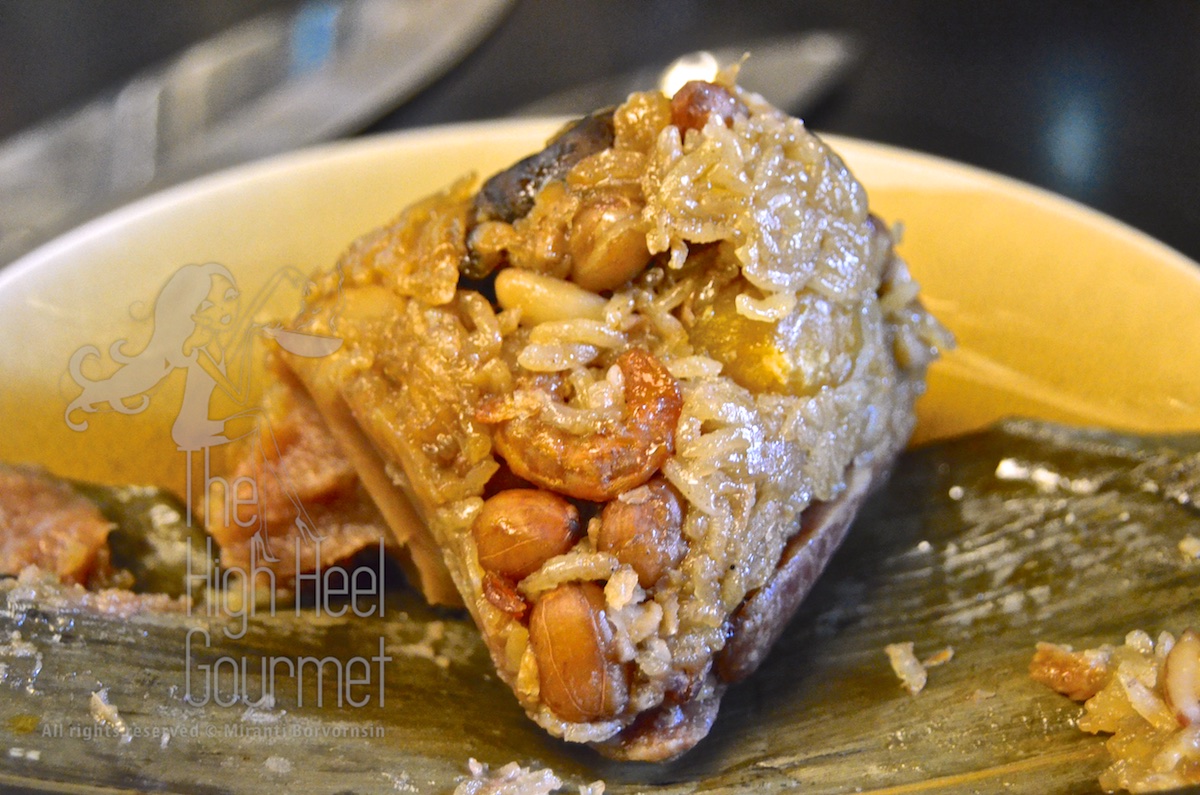
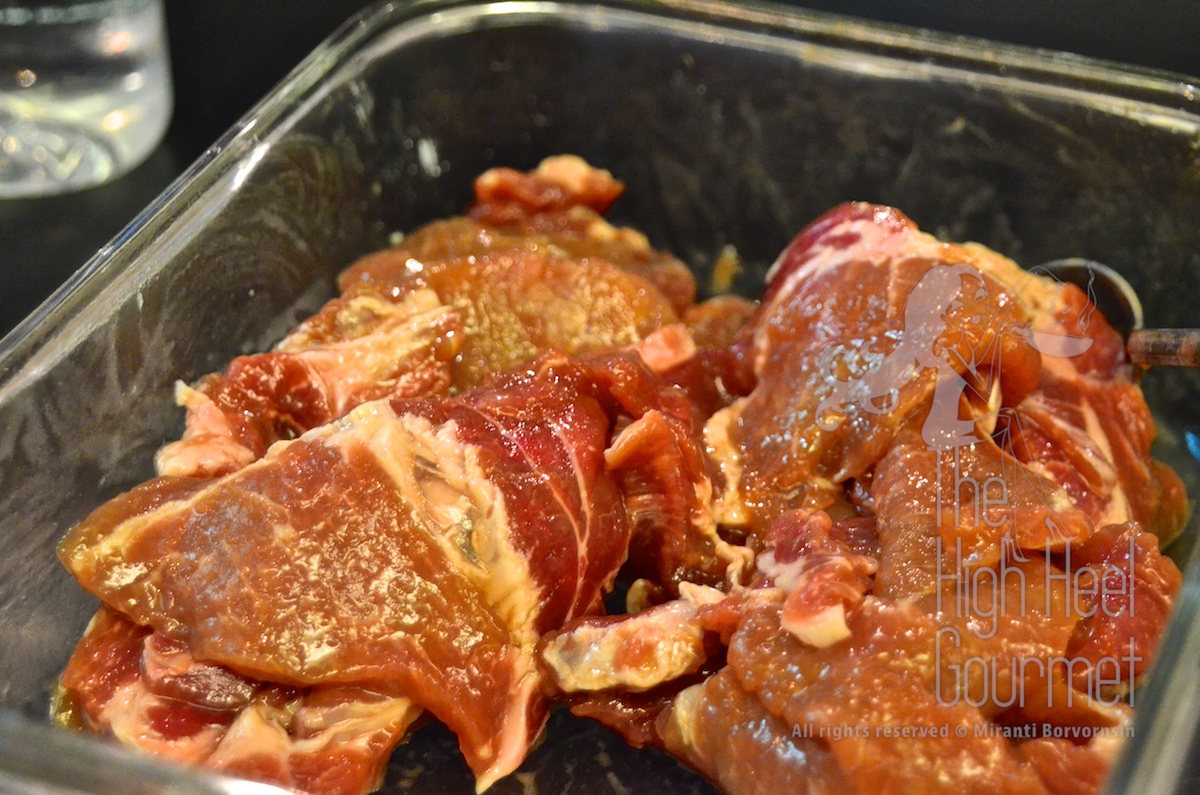
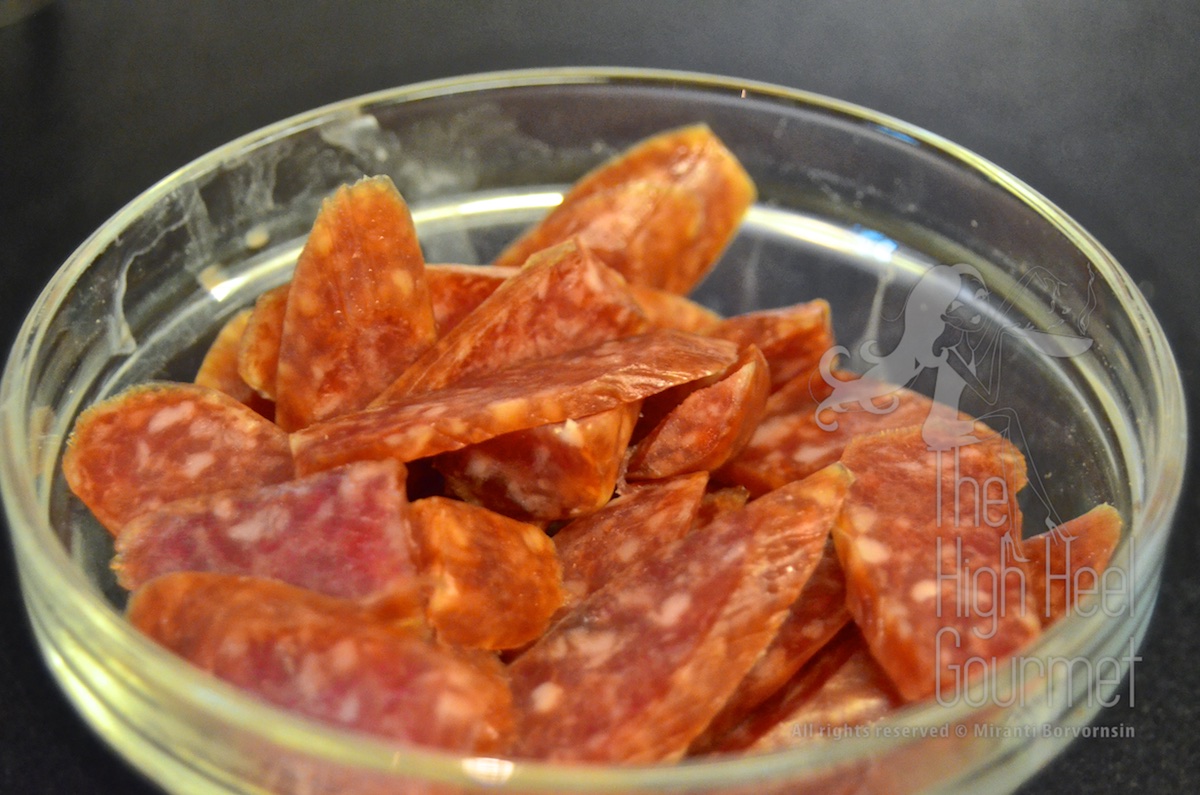
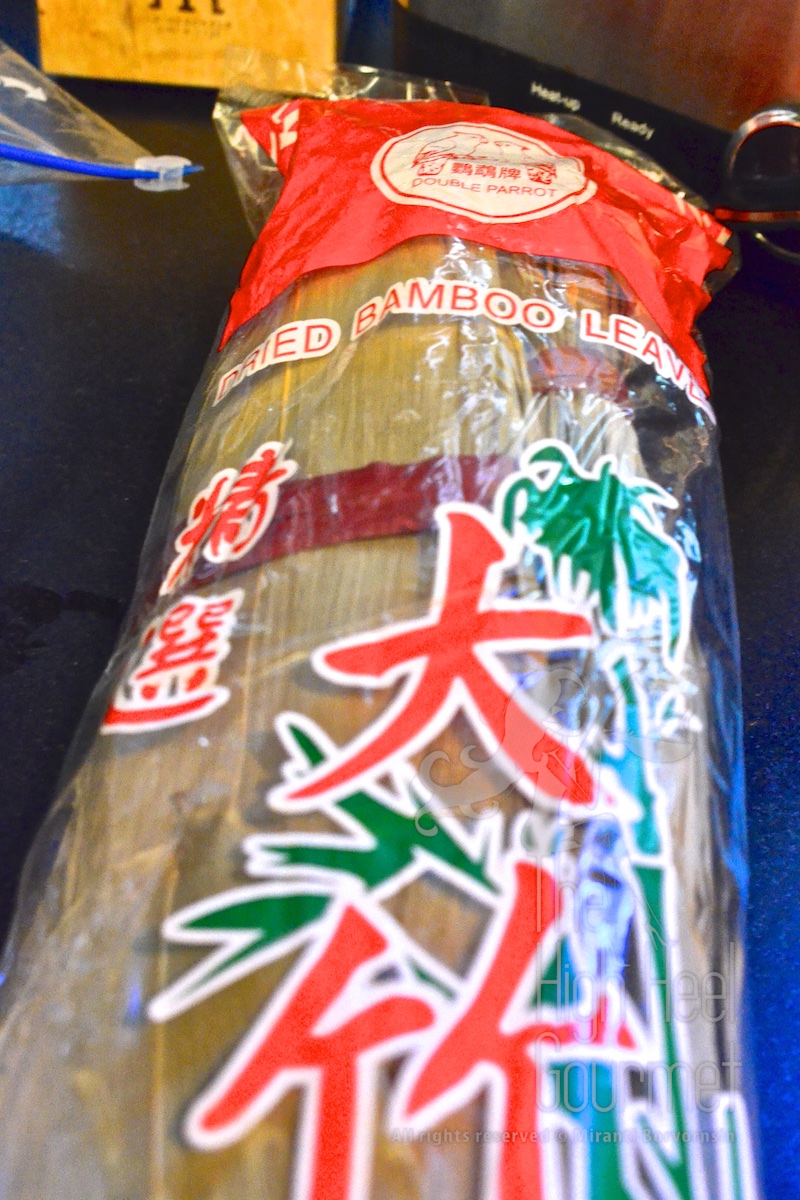
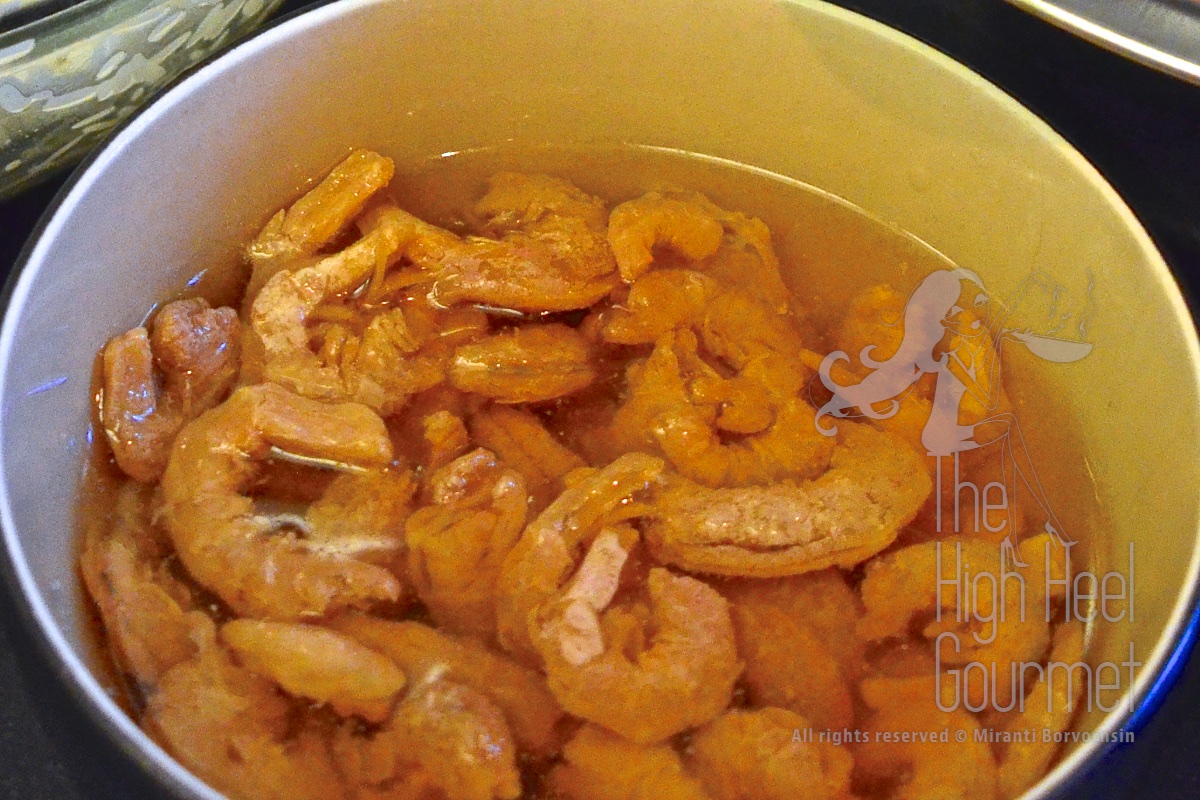
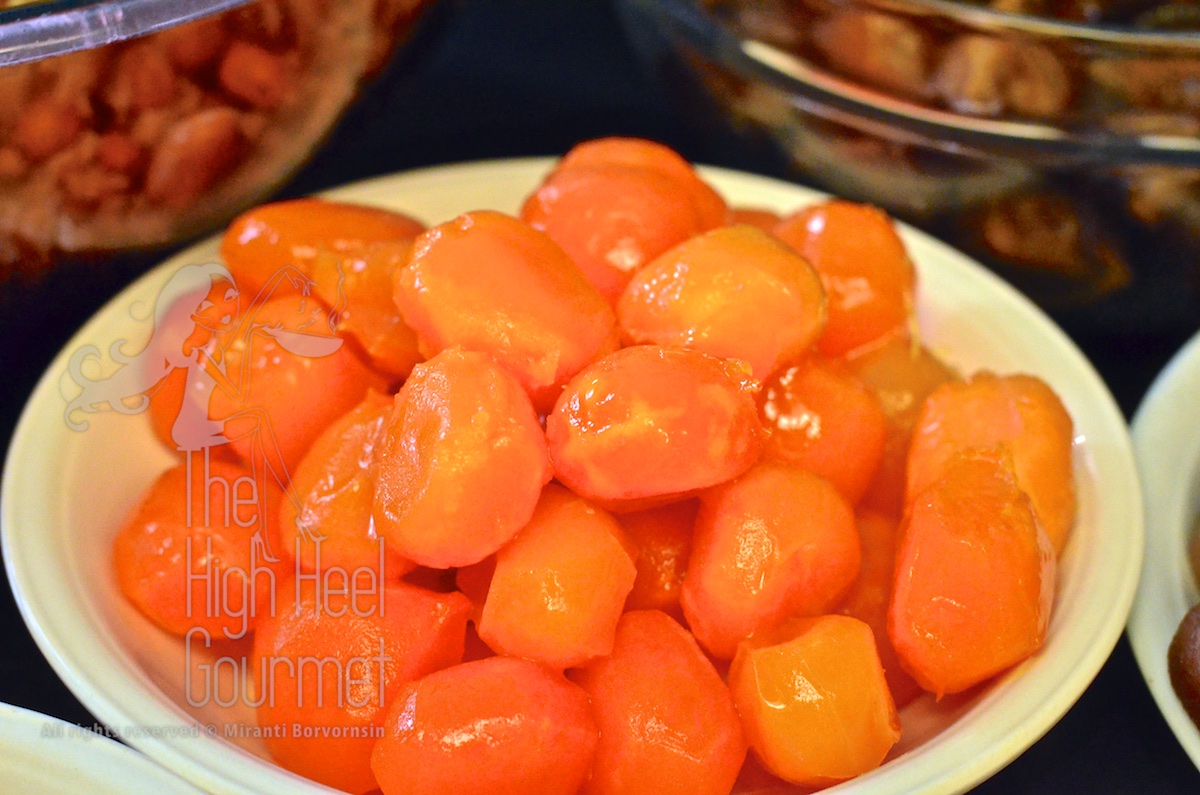
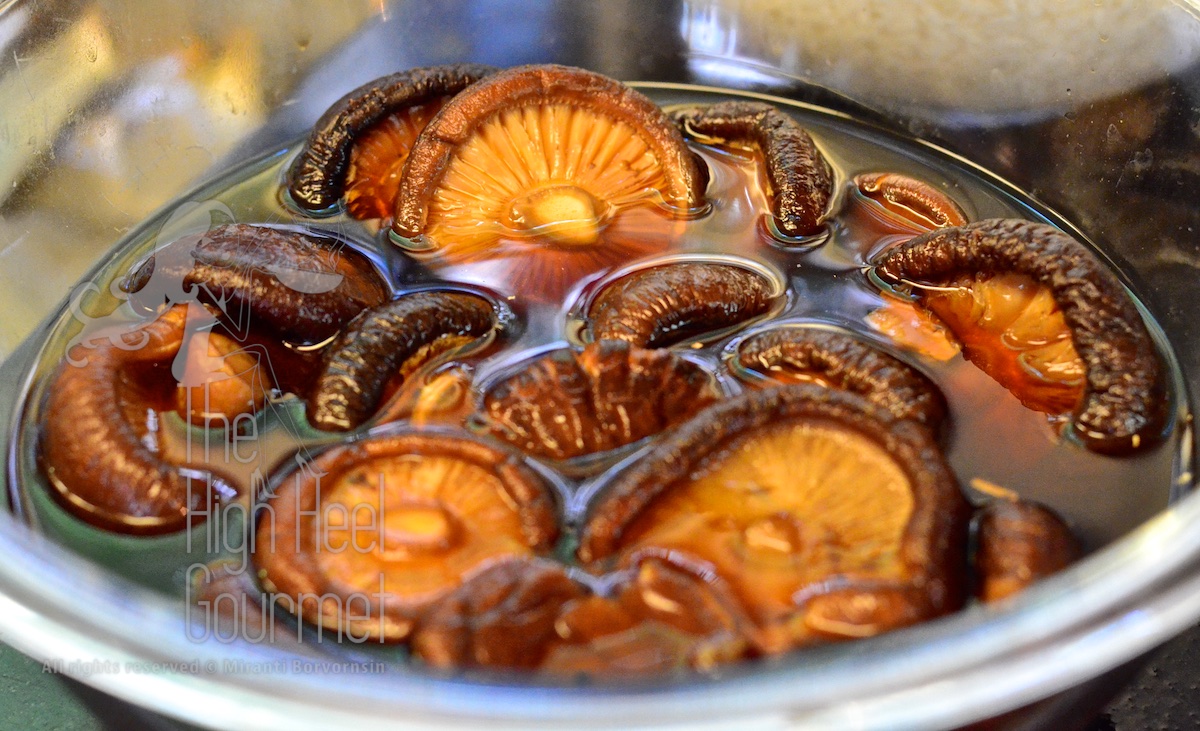
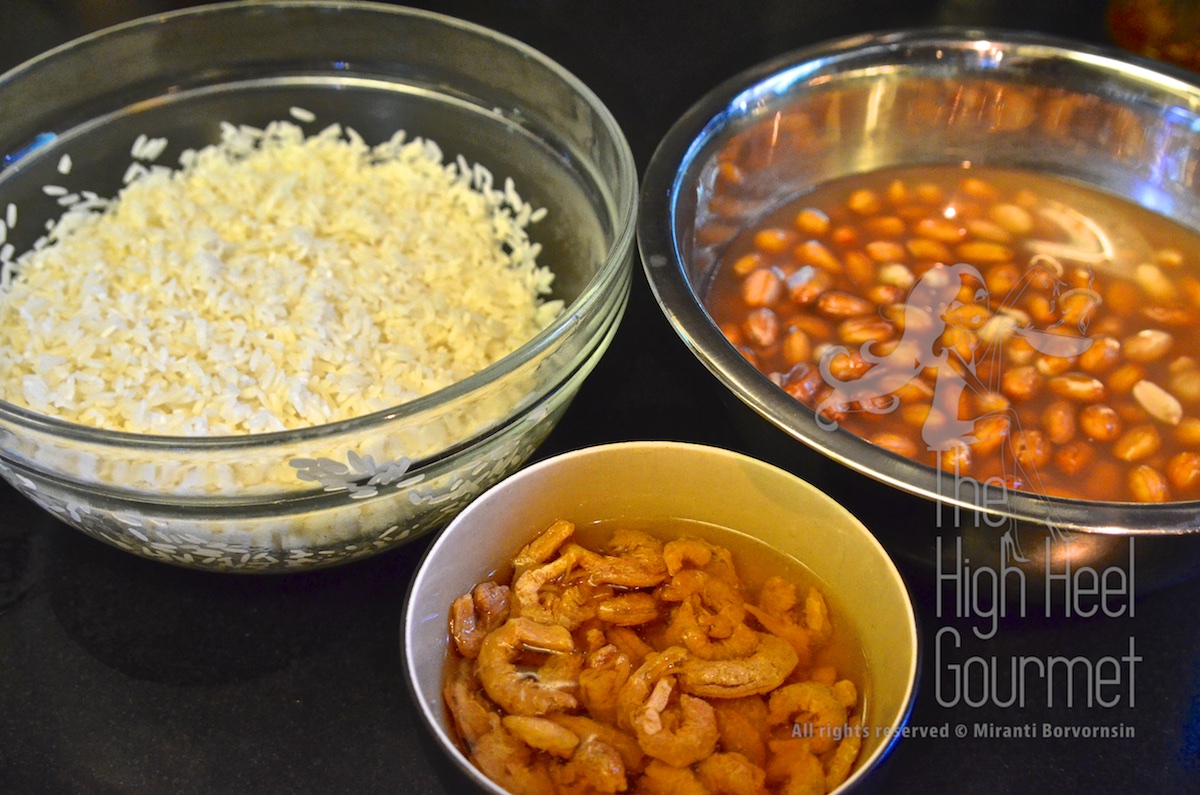
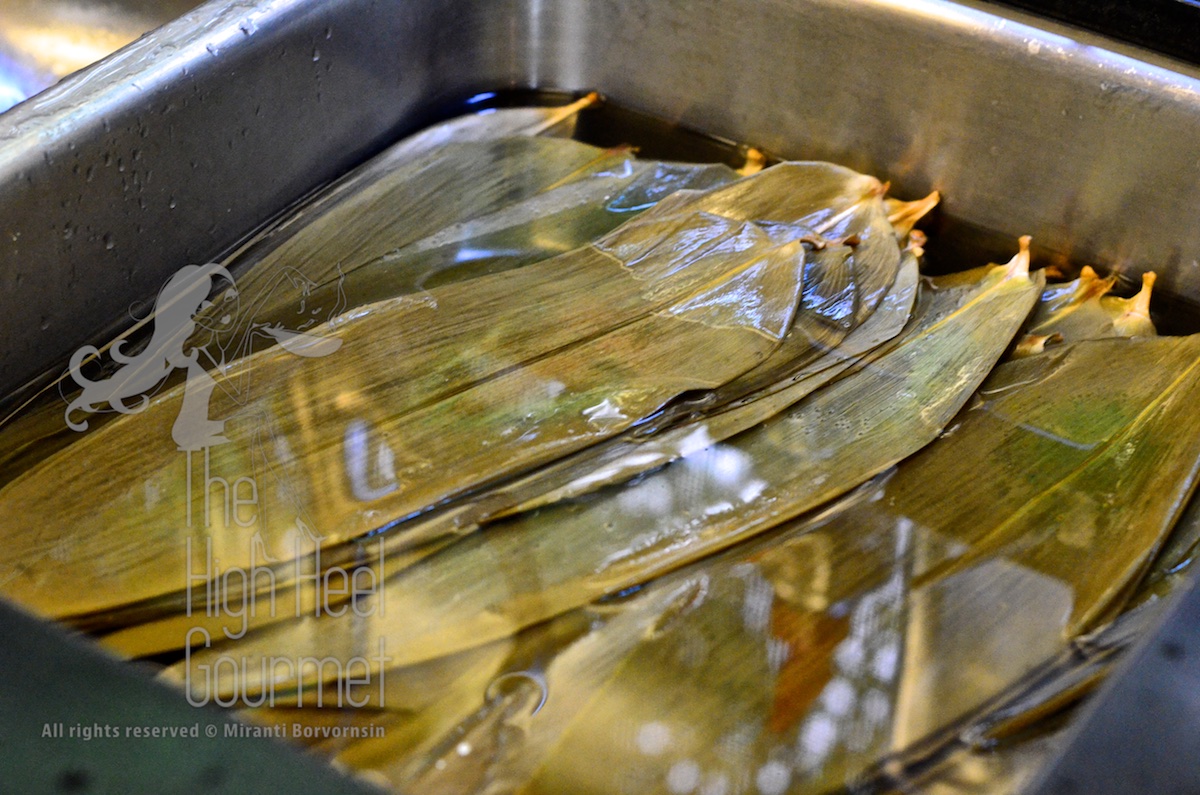
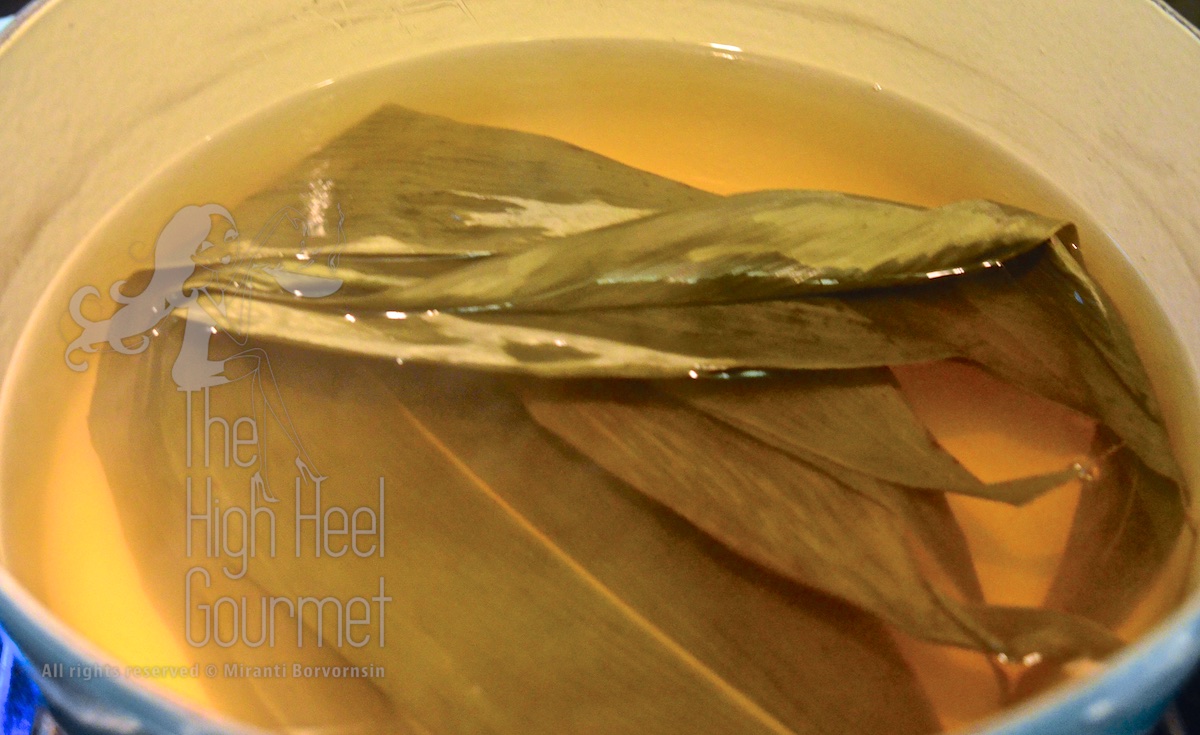
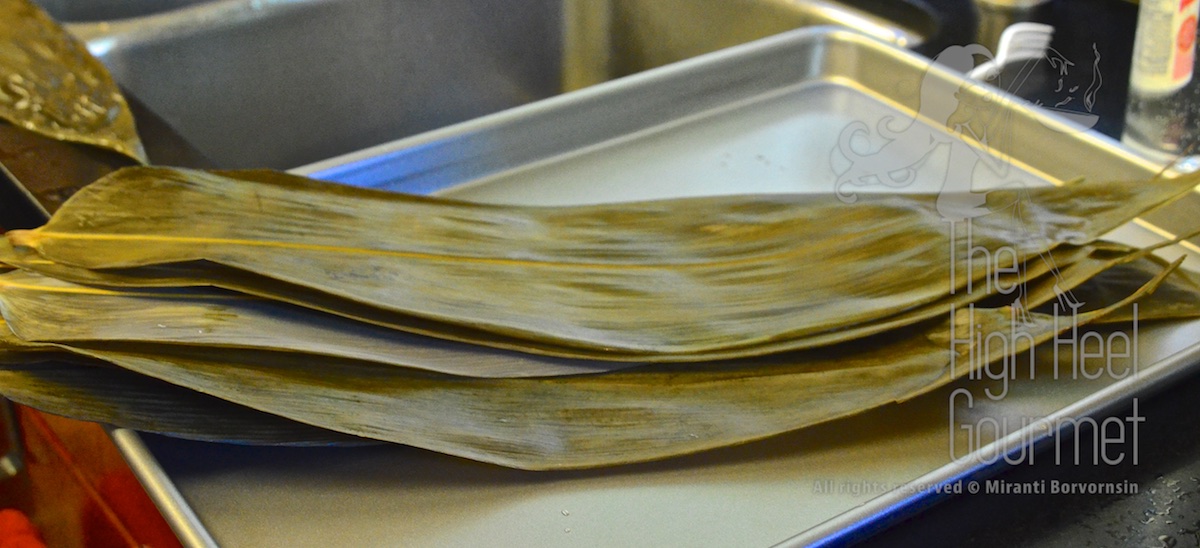
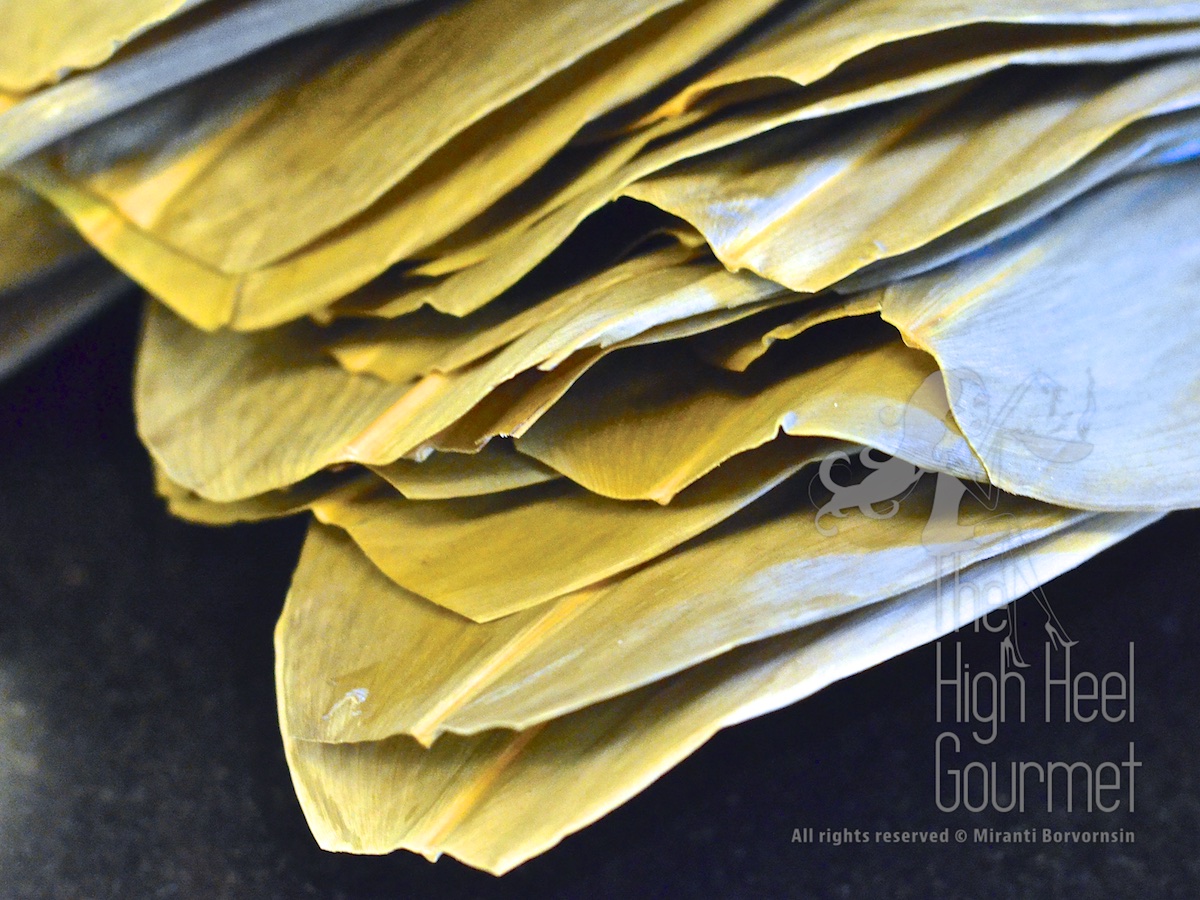
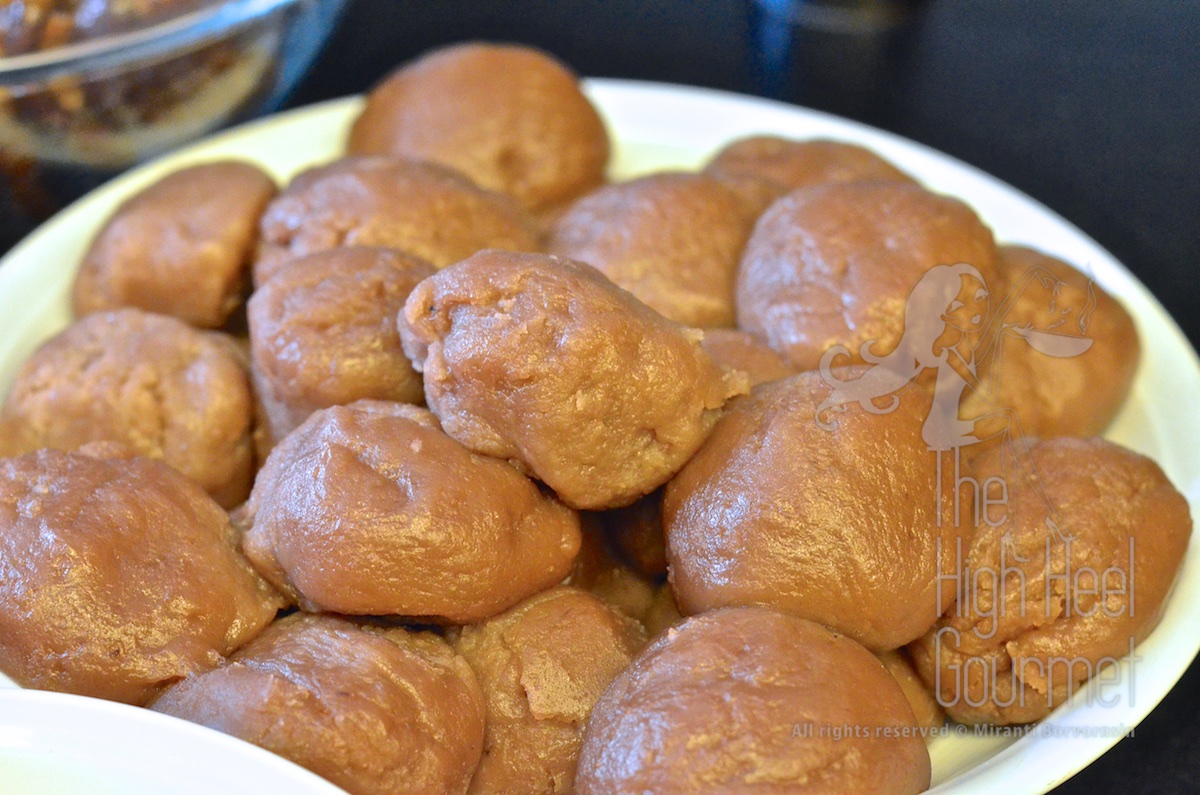
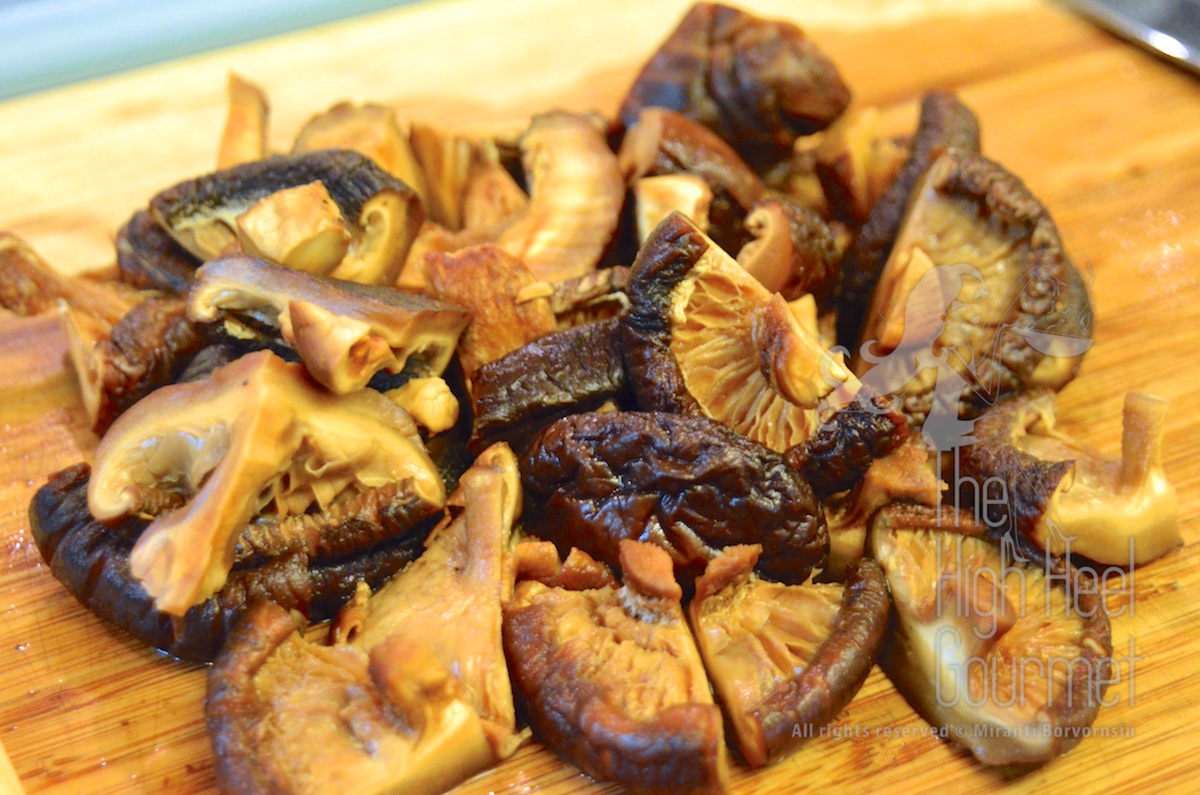
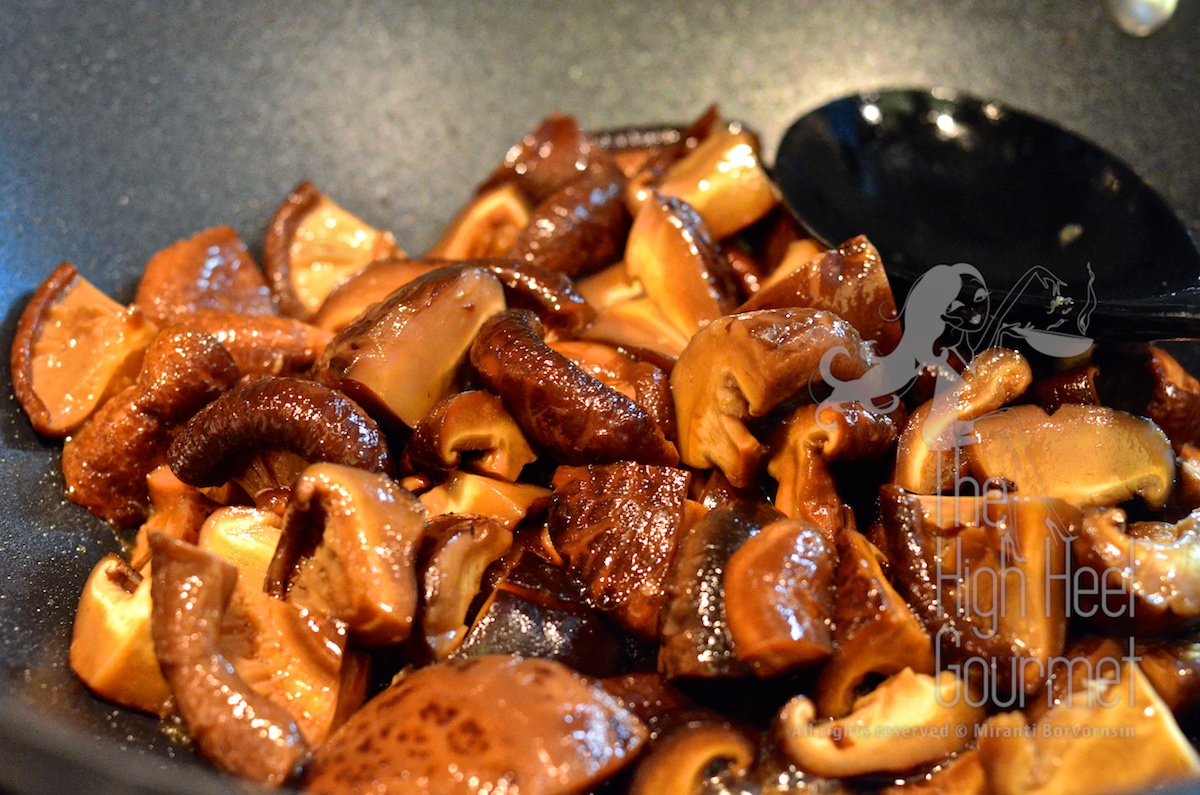
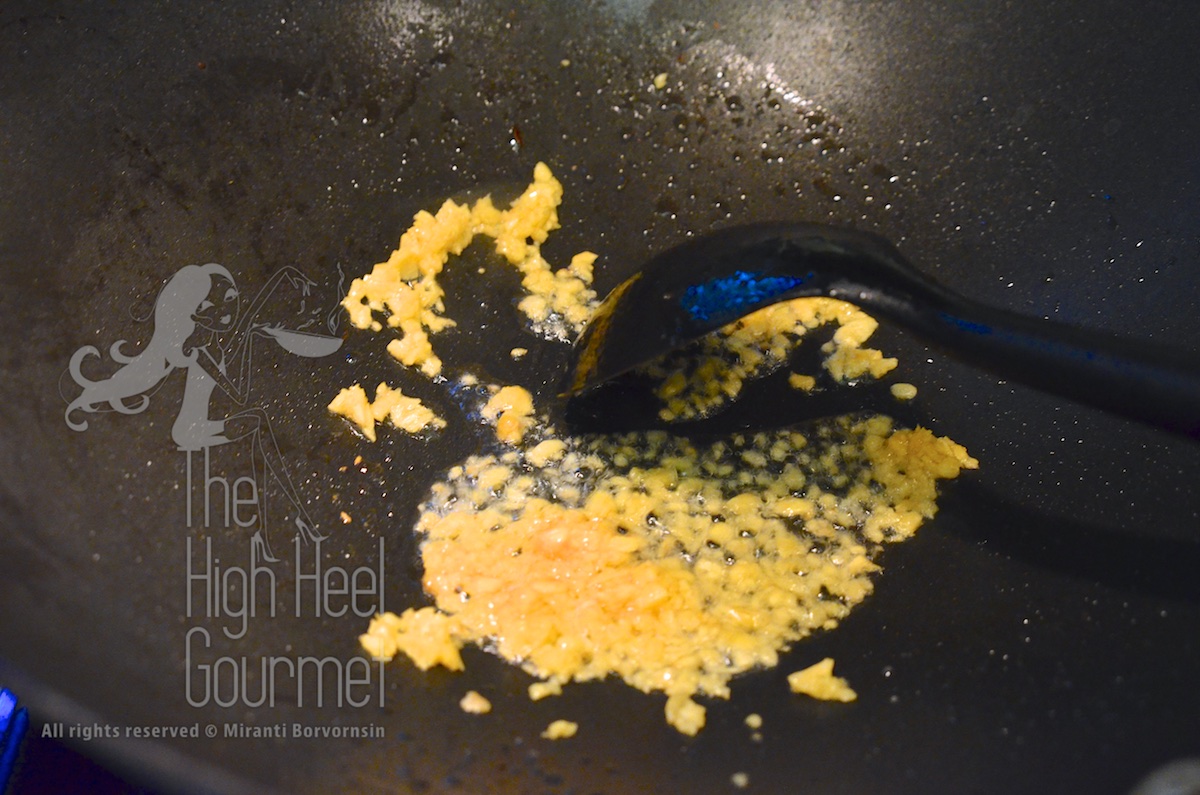
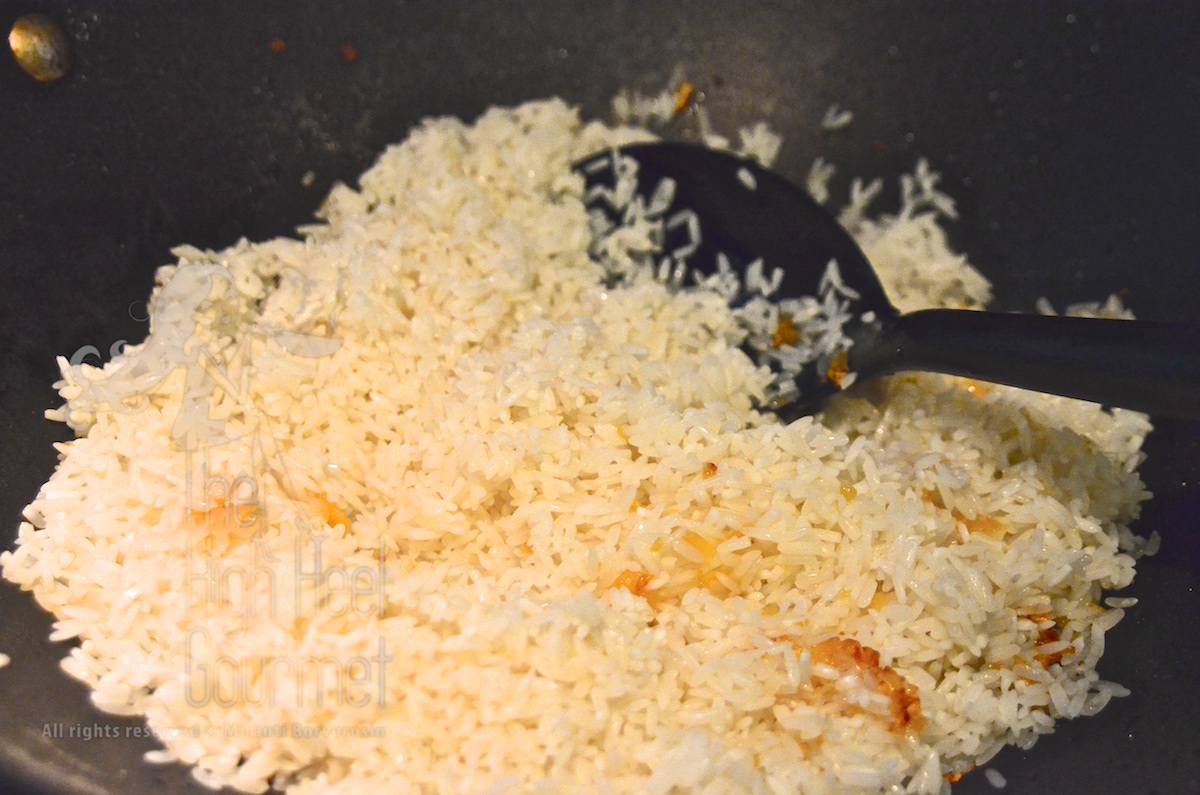
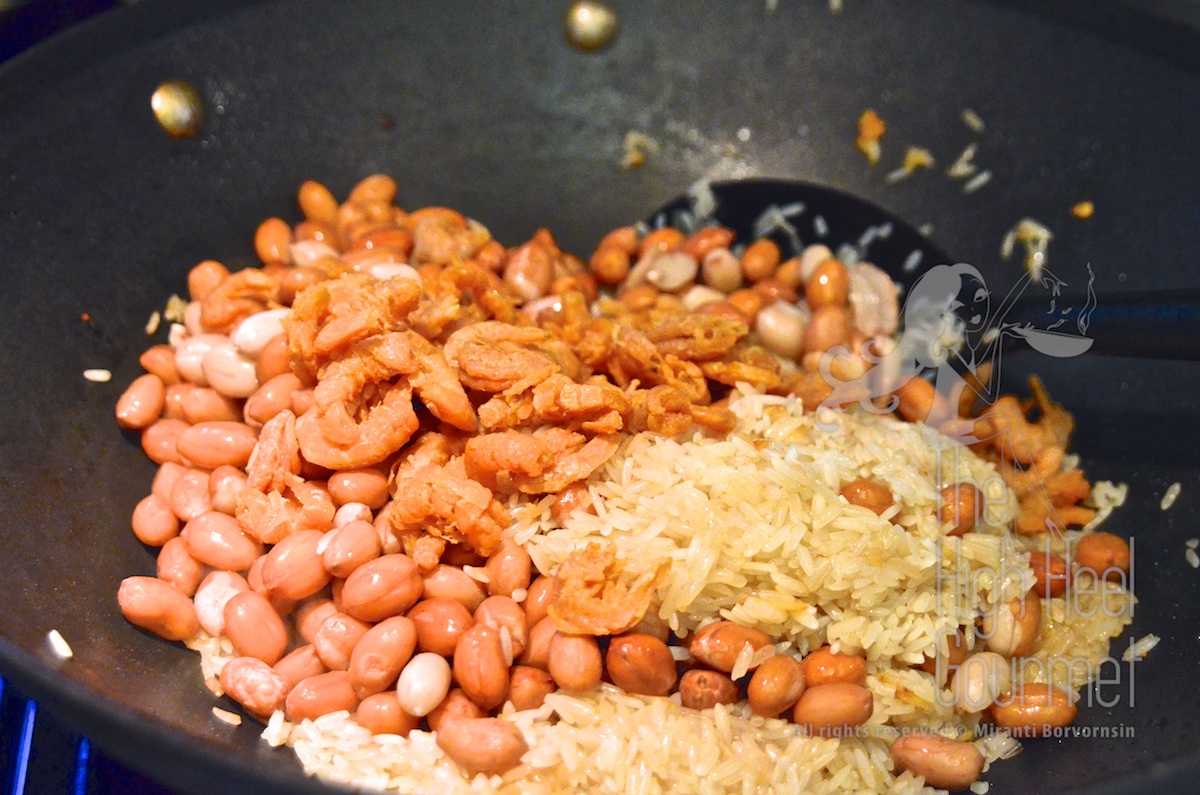
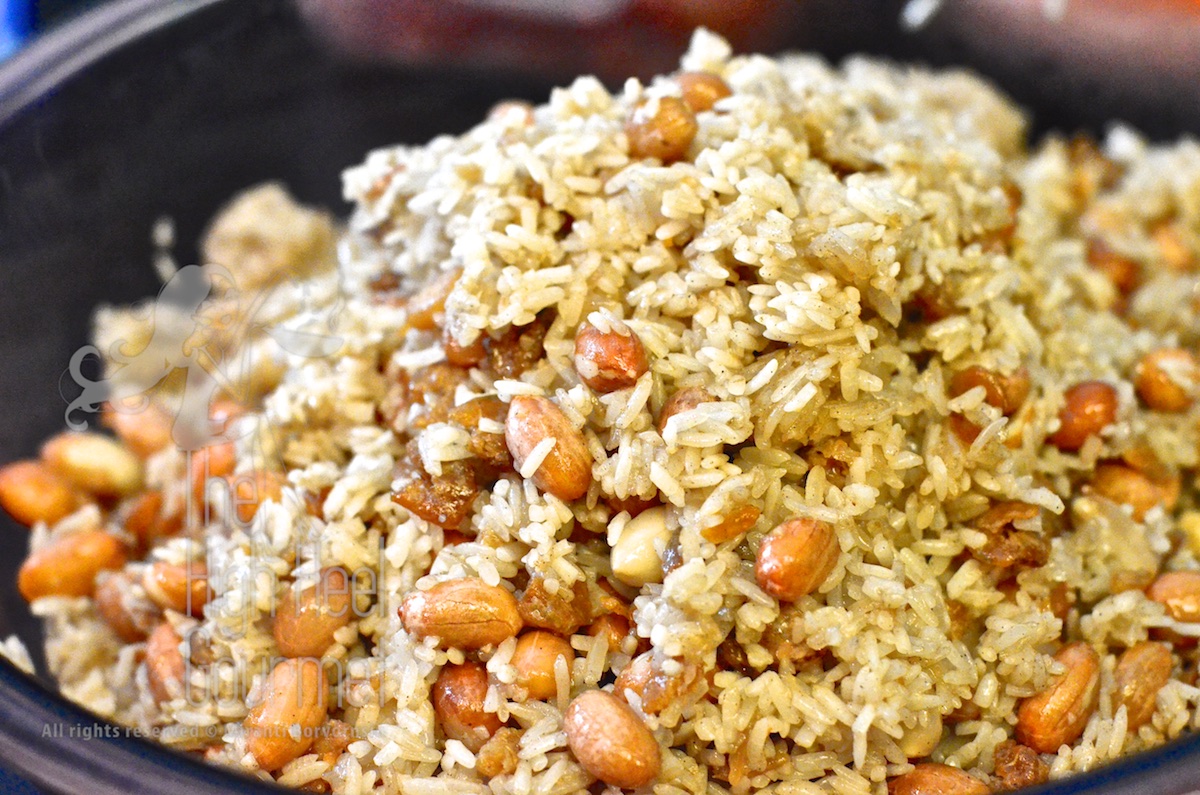
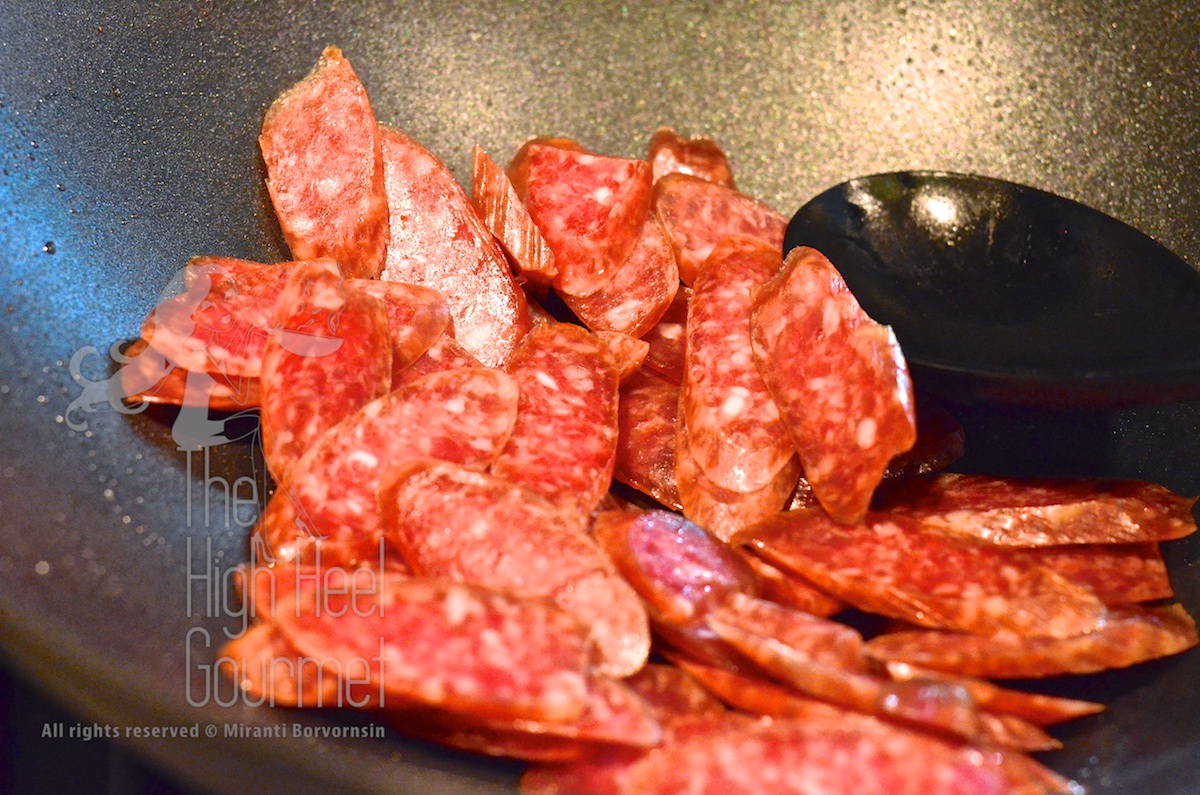
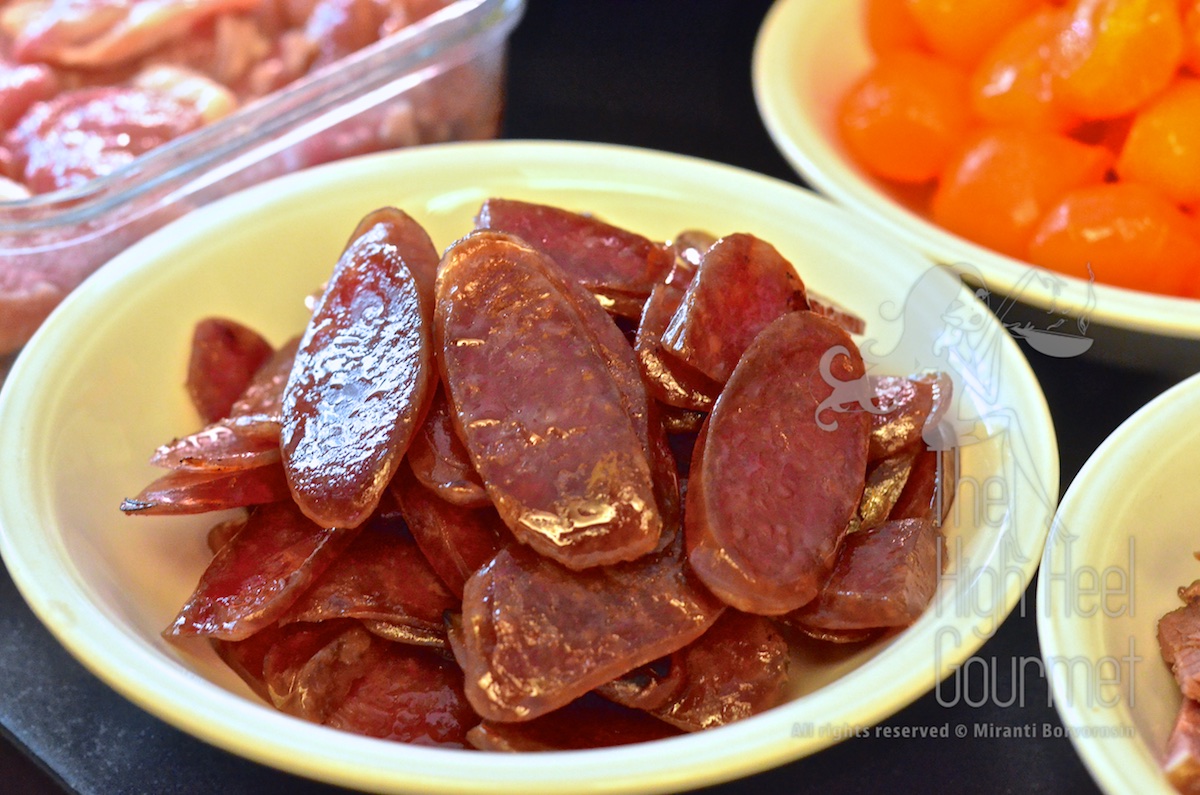
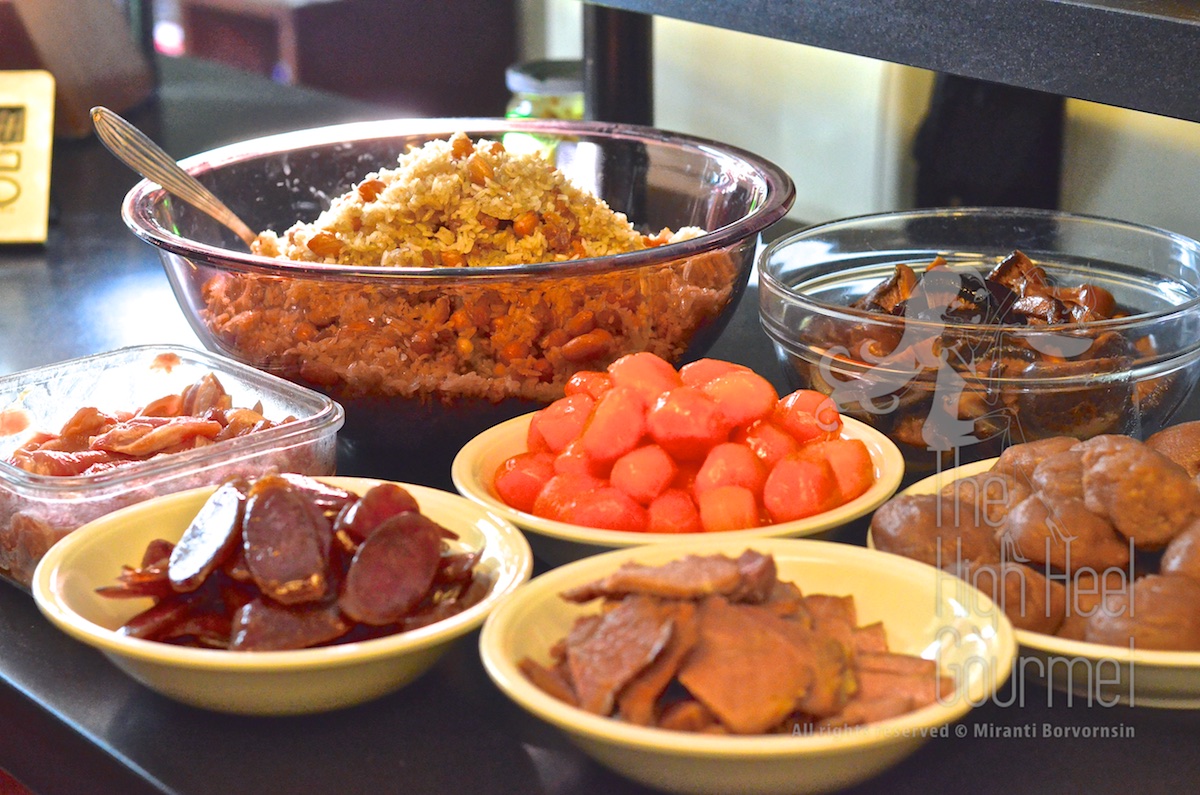
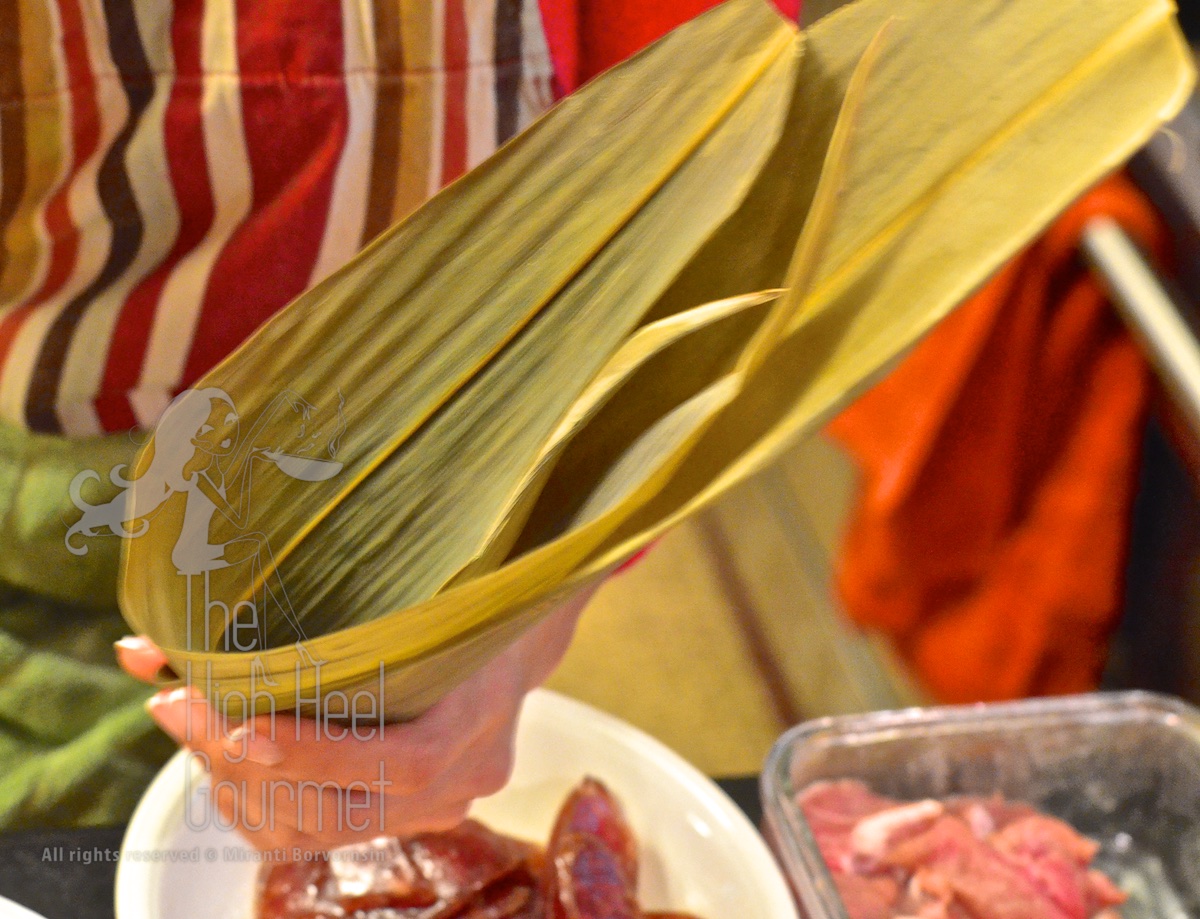
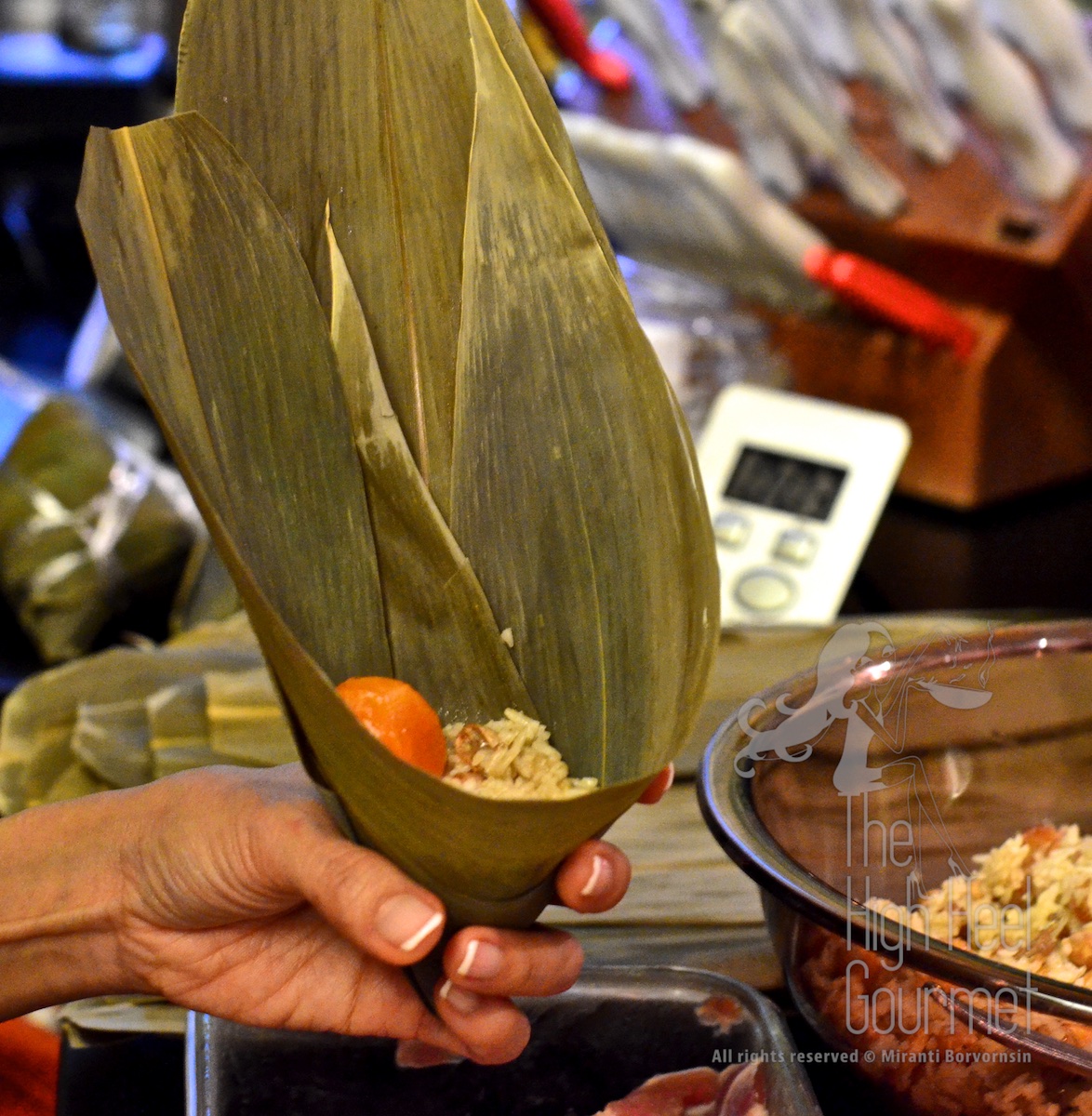
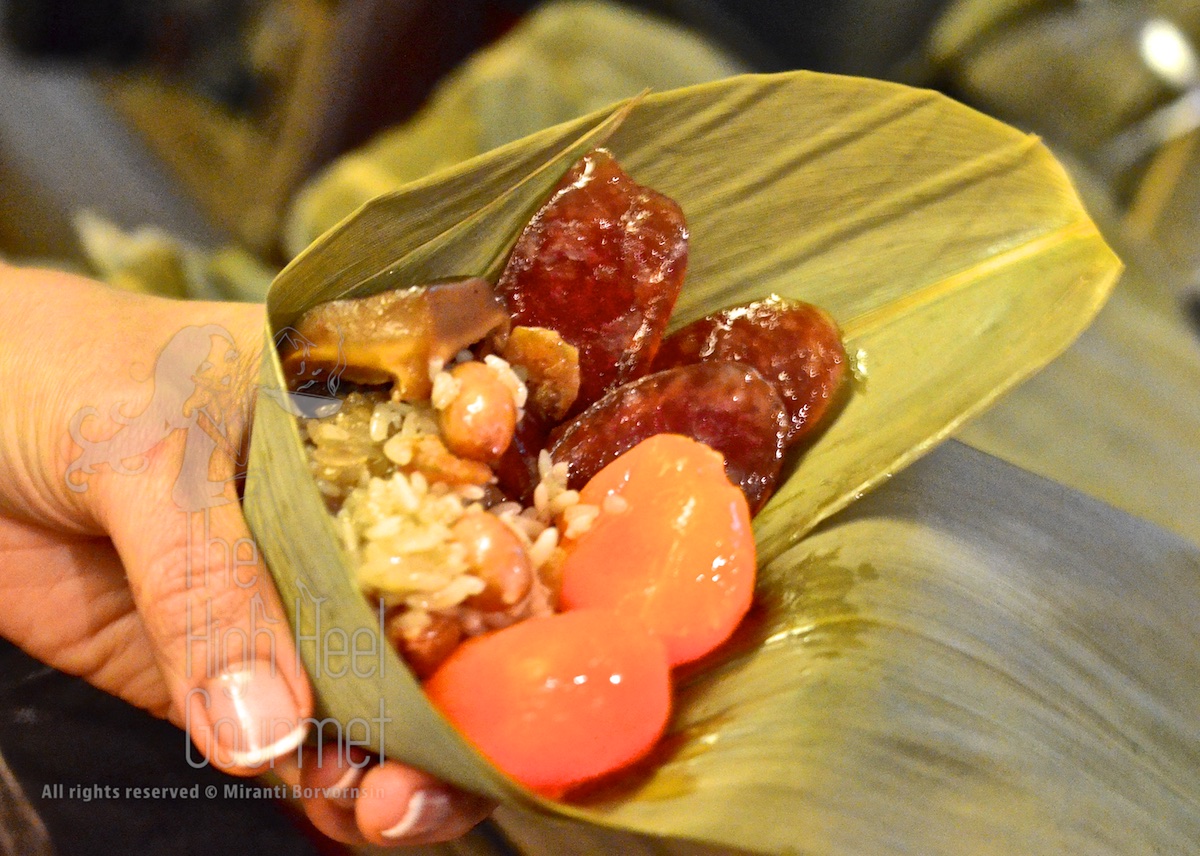
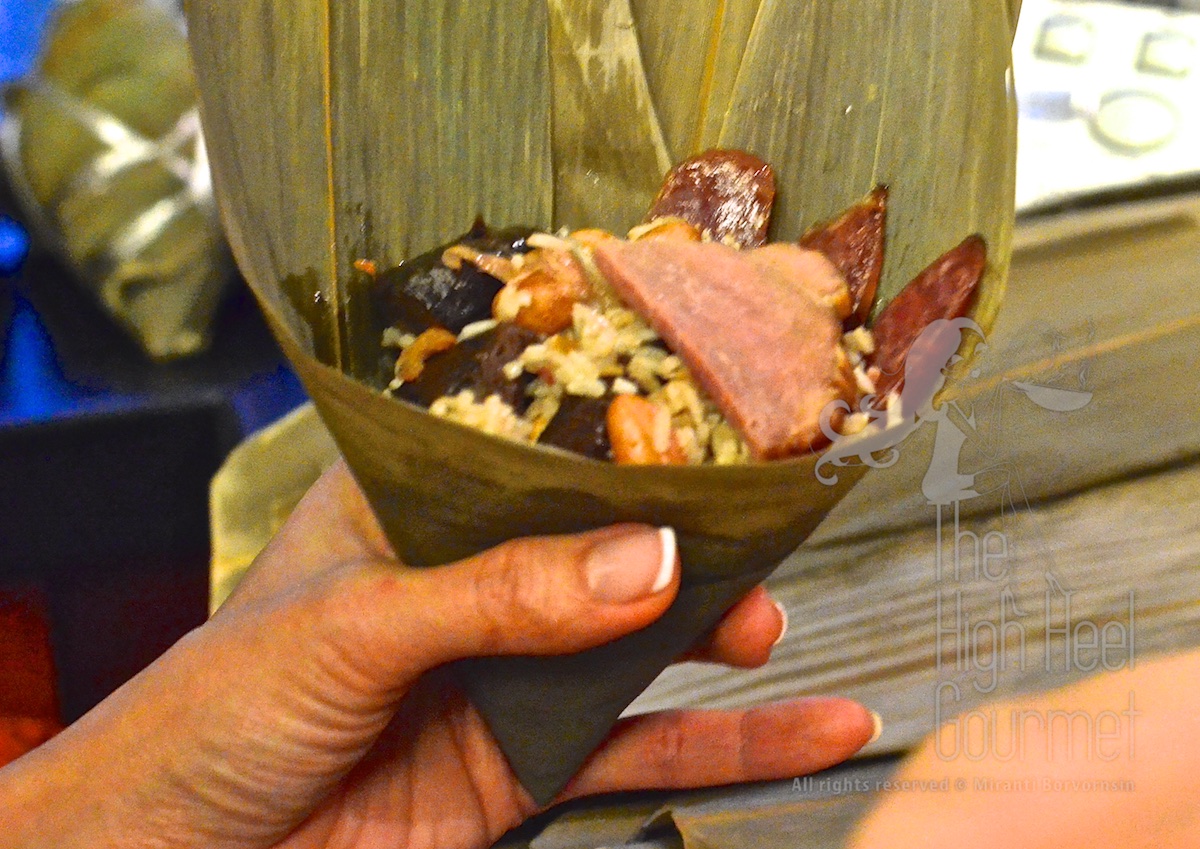
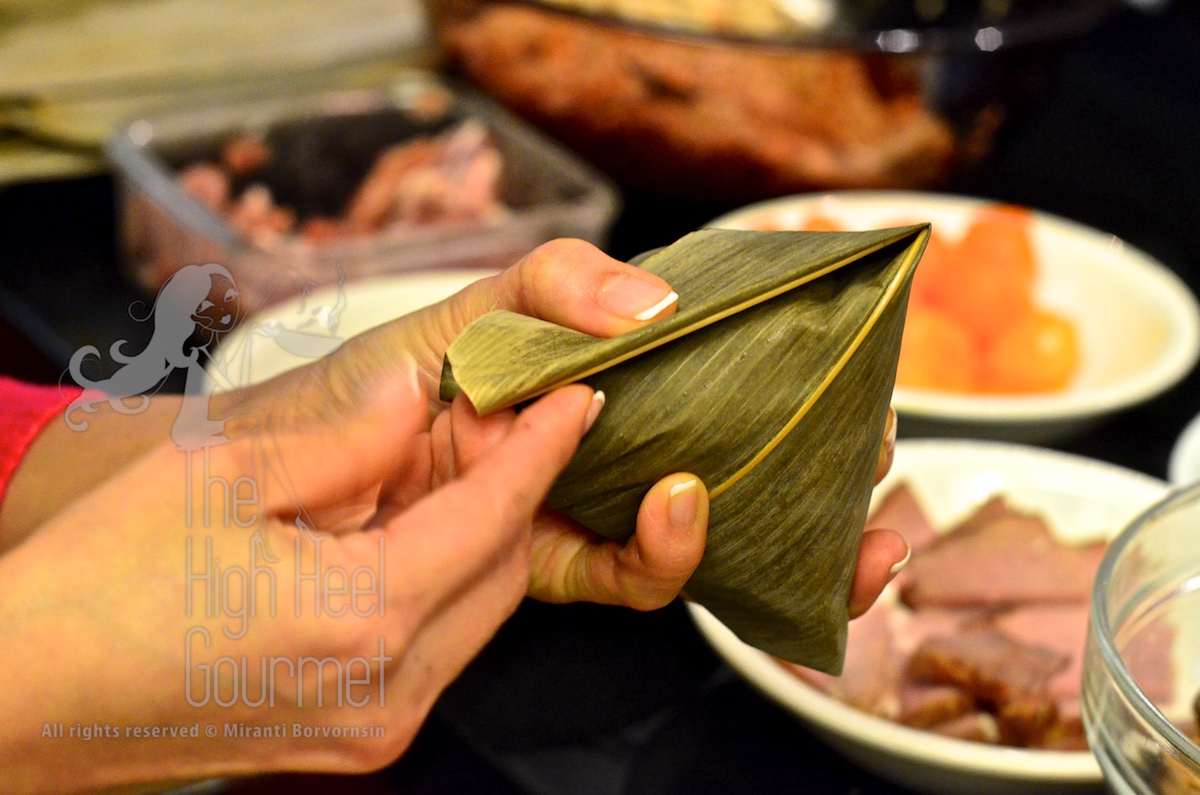
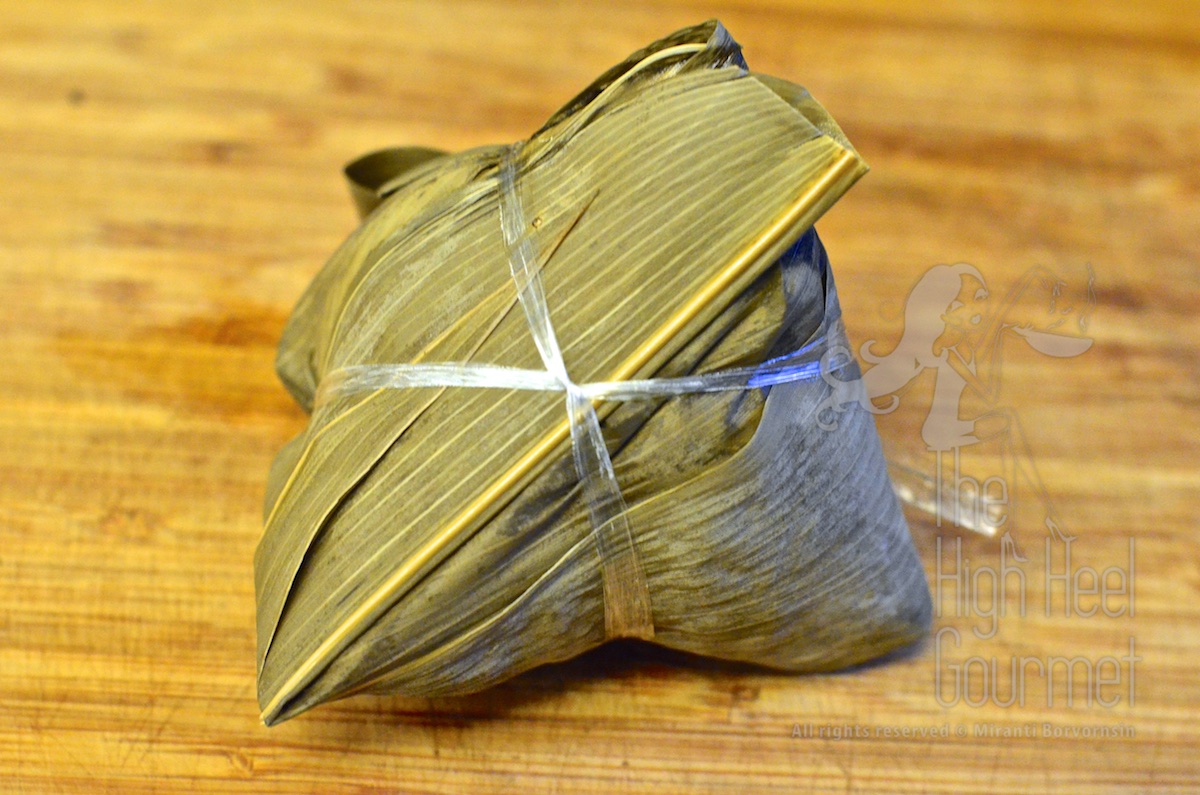
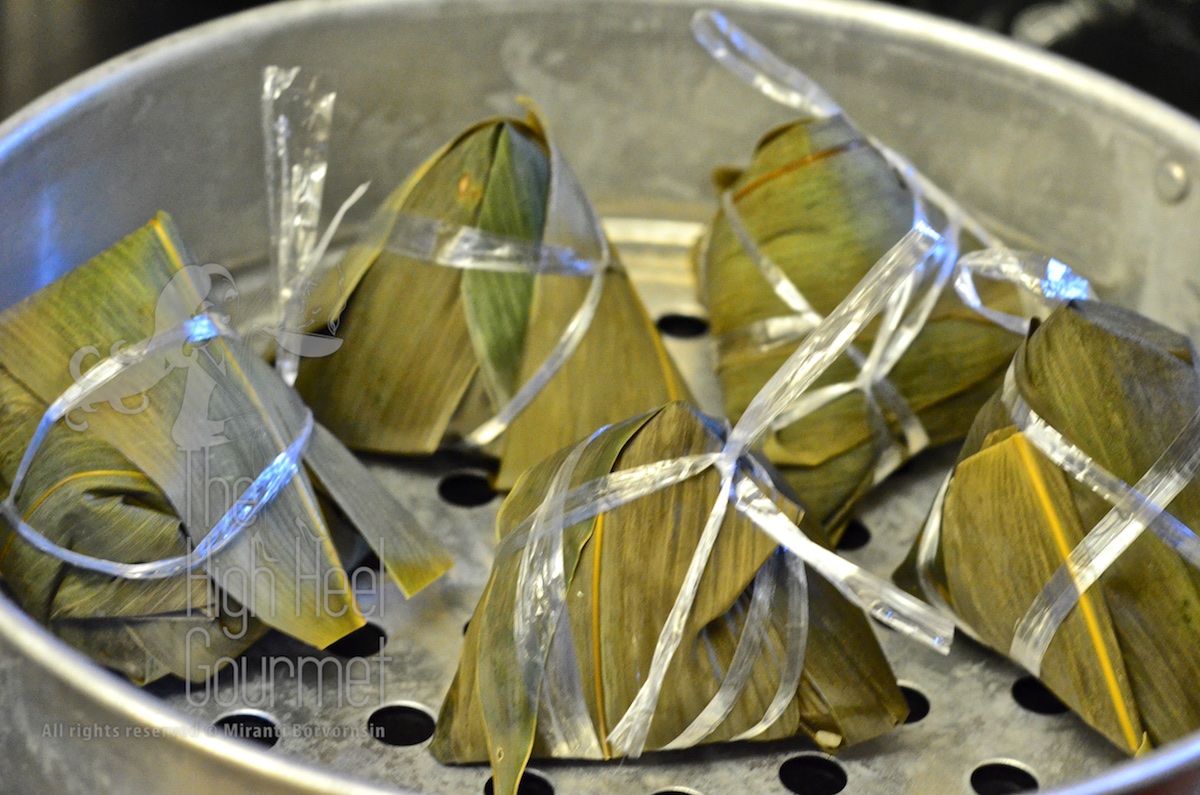
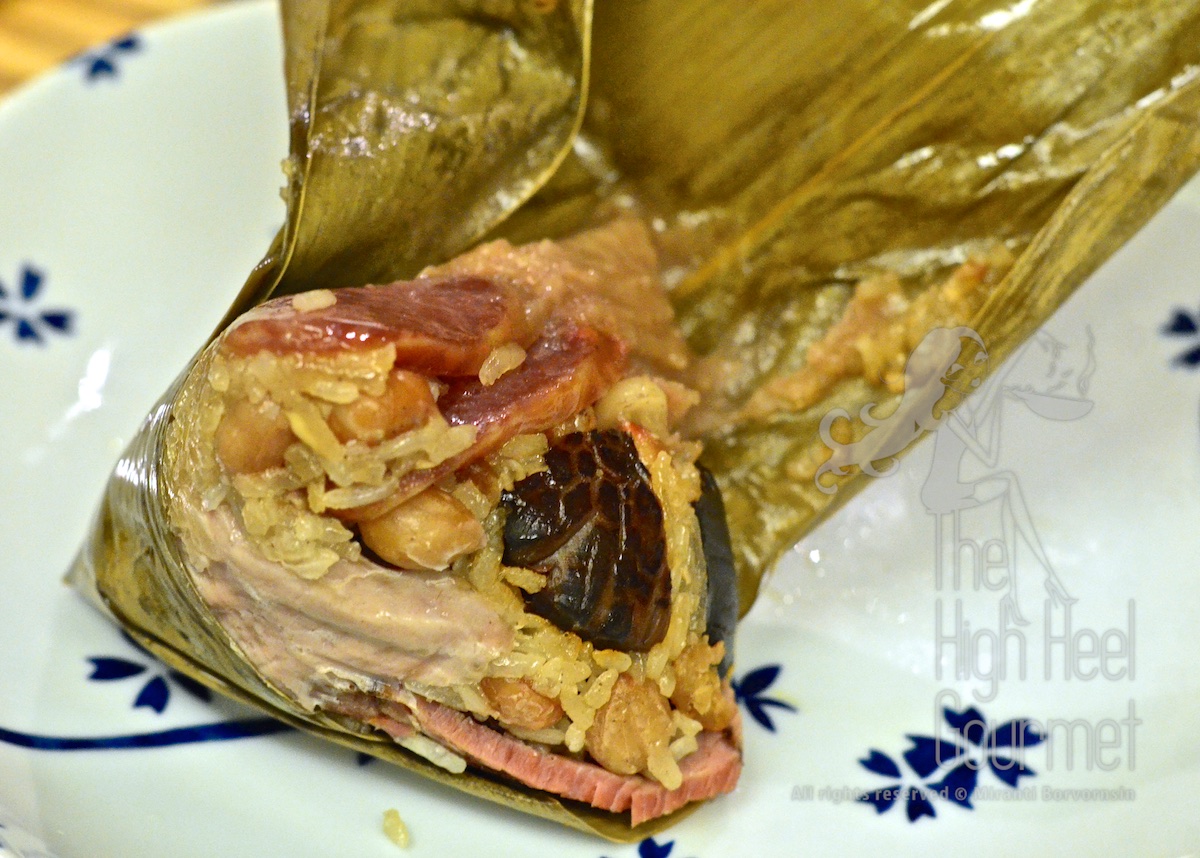
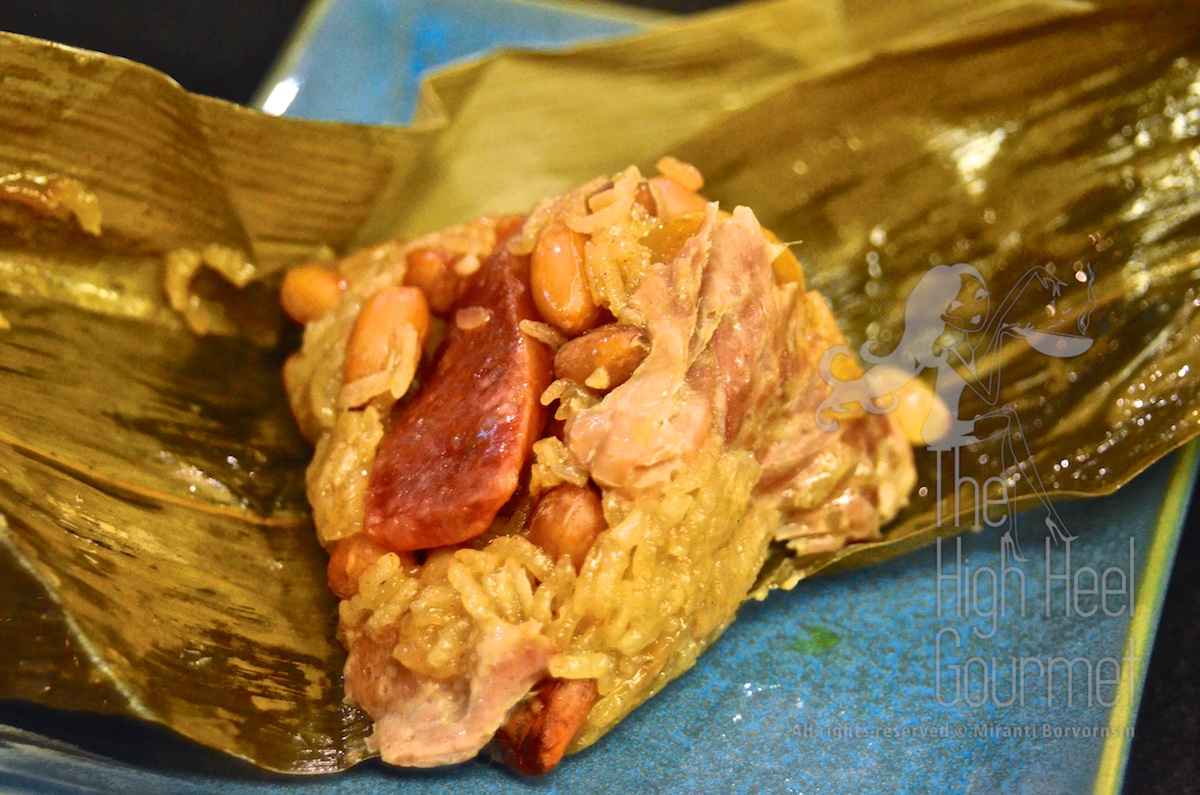
I LOVE Bahjang!!! Miranti you are a genius! What a tedious process which only the best of chefs dare undertake. Thank you. Oh I miss this delicacy so much! And yours is so generous with all the fillings. My grandmother used to make this. In Malaysia we have different kinds of stuffings – from spicy dried shrimps to black eye peas. But yours with all the porky goodness and salted egg yolk is my favourite! The last time I had this was maybe 6 years ago! Thanks for the memories! Sharon
I’m trying to simplify them but as of now, I haven’t found a “simple Bah Jang” that is as good as a traditional one yet. It’s much less complicate and much more fun if the family members are working together like the old time, you know.
This is great! I’ve been trying to tail my grandmother for her Bah Jang recipe, but she just throws everything together and disregards measurements (I do the same too but its a disaster when I can’t follow what she’s doing). We normally add really fatty pork, dried and dried oysters in place of the chinese sausage and it is amazing! Will definitely try this recipe and practice wrapping those leaves, they are so tricky 🙁 Thank you for this detailed post!
Yay! I’m glad finally someone not my close circuit of my friend would make this. A LOT of people said the recipe is so intimidating! Some still reading the recipe and still ask me to make this for her or go buy the “not so complete” version from the market and never really make them. If you are not going to post on your blog (of which I’m following), can you please, post picture on my facebook page? I want to see it. BTW there is another recipe that my friends were so intimidated by, it’s the Gu Chai http://www.highheelgourmet.com/2012/02/19/gu-chai/. I so don’t get it why it’s so complicated in their minds, might be the wrapping part.
I’ve taken some low quality pictures from the last bah zhang making session with my grandmother. Will put those pictures up soon on my blog, and will try constructing a proper recipe with your instructions as a guide during the coming bak zhang season (I’m truly a bad bah zhang wrapper and amateur cook!). Hopefully it turns out as good as yours! The “Gu Chai” is a lot like my favourite snack, the “soon kuay” which is stuffed with shredded turnip, carrot, mushroom and pork instead. The part that is intimidating is probably the wrapping, you do it very well!!!
This is great! I’ve been trying to tail my grandmother for her Bah Jang recipe, but she just throws everything together and disregards measurements (I do the same too but its a disaster when I can’t follow what she’s doing). We normally add really fatty pork, dried and dried oysters in place of the chinese sausage and it is amazing! Will definitely try this recipe and practice wrapping those leaves, they are so tricky 🙁 Thank you for this detailed post!
Yay! I’m glad finally someone not my close circuit of my friend would make this. A LOT of people said the recipe is so intimidating! Some still reading the recipe and still ask me to make this for her or go buy the “not so complete” version from the market and never really make them. If you are not going to post on your blog (of which I’m following), can you please, post picture on my facebook page? I want to see it. BTW there is another recipe that my friends were so intimidated by, it’s the Gu Chai http://www.highheelgourmet.com/2012/02/19/gu-chai/. I so don’t get it why it’s so complicated in their minds, might be the wrapping part.
I’ve taken some low quality pictures from the last bah zhang making session with my grandmother. Will put those pictures up soon on my blog, and will try constructing a proper recipe with your instructions as a guide during the coming bak zhang season (I’m truly a bad bah zhang wrapper and amateur cook!). Hopefully it turns out as good as yours! The “Gu Chai” is a lot like my favourite snack, the “soon kuay” which is stuffed with shredded turnip, carrot, mushroom and pork instead. The part that is intimidating is probably the wrapping, you do it very well!!!
hahaha a lot of “practicing pieces” that didn’t make it to the blog, you know. I never have soon kuay but I think it’s the same thing. Because this one is also called “gui chai guay” too.
but the finished ones are so perfect! yes they are similar except for the fillings but that’s about it. please keep on blogging! I love your posts, very detailed and super descriptive (not to mention the very delicious looking dishes that result)
good post, i have been looking for i
Yay!…I’m excited every time someone is about to make Bah Jang 🙂 just pure happiness that can only be trumped with eating the Bah Jang!
good post, i have been looking for i
The sticky rice in Vietnamese is called Banh U. =]
The sticky rice in Vietnamese is called Banh U. =]
Vow so many fillings for zongzi! I love the most popular fillings like pork + beans
I am exploring more and more but I like it with many different things inside. I guess it the one you used to from childhood would turn into your favorite.
Vow so many fillings for zongzi! I love the most popular fillings like pork + beans
Looks delicious! I have 2 questions: what kind of pork are you using (tenderloin?), and can you use bananaa leaves?.
You can use tenderloin if you don’t like fat, pork belly or pork butt are all good. It’s all depend on you, which type. You just pick your favorite cut.
Looks delicious! I have 2 questions: what kind of pork are you using (tenderloin?), and can you use bananaa leaves?.
You can use tenderloin if you don’t like fat, pork belly or pork butt are all good. It’s all depend on you, which type. You just pick your favorite cut.
Oh and no banana leaves. It’s much easier to find bamboo leaves. At Chinese market they had them in a pack. The smell of the bamboo leaves add flavor to the dumplings.